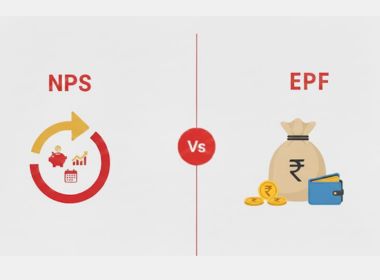Search Suggestions
- Gold Loan
- Money Transfer
- Mutual Funds

UTR Number Details: Verification, Status, and Its Role in Personal Loans
In today’s digital banking era, fund transfers via NEFT and RTGS are common. But how do you track a transaction? That’s where the UTR number comes into play. The full form of UTR is Unique Transaction Reference, a distinct 22-character code assigned to every NEFT and RTGS transaction in India. This number is crucial for tracking payments, verifying transactions, and ensuring smooth fund transfers.
Table of Content
- What Is Utr No And Its Full Form?
- Length Of Utr Number And Its Structure
- Utr Verification: How To Check Utr Status?
- What Is Neft Utr And Rtgs Utr?
- How Utr Number Is Useful In Personal Loan Online Applications?
Whether you’re making a payment or expecting funds, understanding UTR no and its importance can save you from unnecessary delays. The length of the UTR number varies depending on the bank, but in India, it is typically 16-22 characters long. It is generated automatically when a transaction is processed through NEFT UTR or RTGS UTR systems. When applying for a personal loan online, lenders may ask for a UTR number to verify EMI payments or loan disbursal. Thus, knowing how to perform a UTR verification and check UTR status is essential. In this blog, we’ll explore the details of the UTR number, its significance in banking, and how it plays a vital role in personal loan transactions.
What Is UTR No And Its Full Form?
The full form of UTR is Unique Transaction Reference. It is a unique alphanumeric code assigned to every transaction carried out via NEFT, RTGS, or IMPS. This number helps in tracking, verifying, and resolving issues related to fund transfers. Each UTR number is unique to a specific transaction, ensuring transparency and security in the banking system. If you face any payment-related issues, such as a failed or delayed transaction, the UTR number helps banks trace the funds and take corrective actions.
Length Of UTR Number And Its Structure
The length of the UTR number depends on the type of transaction and the banking system used. In India, UTR numbers generally follow these patterns:
NEFT UTR Number: A 16- to 22-character alphanumeric code
RTGS UTR Number: Typically a 22-character unique code
IMPS UTR Number: Usually a 12-digit number
For instance, a typical NEFT UTR number format looks like "WXYZ210045678912", where:
The first four letters denote the bank. The following digits represent the transaction date and a unique transaction reference. Understanding the length of the UTR number helps in identifying fraudulent transactions and ensuring successful payment tracking.
UTR Verification: How To Check Utr Status?
UTR verification is the process of confirming whether a transaction has been completed successfully. There are multiple ways to check the UTR status: -
Internet Banking & Mobile Banking
Log in to your net banking or mobile banking app. Navigate to the ‘Transaction History’ or ‘Fund Transfer’ section. Search for the specific transaction and locate the UTR number. Click on the transaction to check its status (successful, pending, or failed).
Bank Customer Support
Call or visit your bank and provide the UTR number. The bank will verify and update you on the transaction status.
UPI Apps and Payment Wallets
If you transferred funds via a UPI app, check the transaction history section. The UTR number is usually mentioned in the transaction details.
Suggested Read :How Long Does A Personal Loan Take To Process
What Is Neft UTR And Rtgs UTR?
Both NEFT UTR and RTGS UTR serve as unique identifiers for fund transfers. However, their functionality differs: -
NEFT UTR (National Electronic Funds Transfer)
- Used for batch-wise fund transfers and takes 1-2 hours for settlement.
- Transactions are processed at specific time slots.
RTGS UTR (Real-Time Gross Settlement)
- Used for real-time, high-value fund transfers (above ₹2 lakhs).
- Transactions are settled instantly on a one-to-one basis.
- Preferred for urgent and large fund transfers.
Both NEFT UTR and RTGS UTR help in tracking payments efficiently, ensuring smooth banking transactions.
How UTR Number Is Useful In Personal Loan Online Applications?
The UTR number details play a significant role in personal loan online transactions. Here’s how:
Loan Disbursal Verification
After applying for a personal loan online, the lender transfers the approved loan amount to your bank account. The UTR number helps in confirming whether the disbursed amount has been credited successfully.
EMI Payment Tracking
Loan EMIs are deducted automatically from your bank account every month. If an EMI payment is delayed or not reflected, banks use the UTR number to verify the transaction status.
Dispute Resolution
If you face an issue where the loan amount is deducted but not credited, the UTR number details help in resolving disputes quickly.
Faster Processing & Transparency
Since UTR numbers provide a unique identity to transactions, they help speed up personal loan processing and ensure secure fund transfers.
UTR number details are essential for verifying transactions, tracking payments, and ensuring seamless banking operations. Whether you’re transferring funds via NEFT UTR or RTGS UTR, understanding UTR no and how to check UTR status can help prevent delays and disputes. You can always rely on Muthoot Finance online services for fast and secure bank transfers. Muthoot Finance provides a diverse selection of online money transfer services, enabling customers to send or receive funds efficiently.
- Instant Personal Loan
- EMI Calculator
- Document Required
- Track Personal Loan
- Interest Rate
- Procedure and Eligibility
CATEGORIES
OUR SERVICES
-

Gold Loan
-

Personal Loan
-

Cibil Score
-

Vehicle Loan
-

Small Business Loan
-

Money Transfer
-

Insurance
-

Mutual Funds
-

SME Loan
-

Corporate Loan
-

NCD
-

PAN Card
-

NPS
-

Custom Offers
-

Digital & Cashless
-

Milligram Rewards
-

Bank Mapping
-

Housing Finance
-

#Big Business Loan
-

#Gold Loan Mela
-

#Kholiye Khushiyon Ki Tijori
-

#Gold Loan At Home
-

#Sunherisoch
RECENT POSTS

Gilt Fund vs Liquid Fund: Full Form, Meaning & SIP Guide
Know More
XIRR in Mutual Funds & SIP: Full Form, Meaning, Formula and How to Calculate
Know More
7 Key Factors to Consider Before Taking an SME Loan
Know More
Difference Between Black Gold and Gold: Everything You Need to Know
Know More
NPS vs EPF: Everything You Need to Know About Retirement Savings
Know More
What is a Credit History? Impact on Credit Score and Credit Report
Know More
Loan Closure Vs. Loan Settlement: Meaning, Benefits, and CIBIL Score Impact
Know More
Is Silver the New Gold? A Look at 2025 Price Trends
Know More
What Are the Various Types of Equity Funds and How They Work?
Know More
Why Are Gold Loans Becoming the Most Preferred Financial Option in 2025?
Know MoreFIN SHORTS

What Are Co-Pay and Deductibles in Insurance Policies?
Know More
Should You Take a Loan Against Your Mutual Fund or SIP?
Know More
Top 5 Best Mid-Cap Mutual Funds to Watch in 2026
Know More
Are Personal Loans Right for Retirees? Key Points to Consider
Know More
What Happens to a Personal Loan After the Borrower Dies?
Know More
Best Loan Choices for Credit Scores of 580 and Below
Know More
7 Reasons Why a Gold Loan Is the Best Option for Small Businesses
Know More
10 Reasons Why People in India Prefer Physical Gold
Know More
Real Estate vs Gold: Which Is a Better Investment in India?
Know More
10 Common Mistakes That Make Investors Lose Money in Mutual Funds
Know More
10 Reasons Why Gold Has So Much Appeal in Uncertain Times
Know More
7 Ways Settling Debt Can Impact Your CIBIL Score
Know More- South +91 99469 01212
- North 1800 313 1212




